Jan. 31, 2025
Prelims Pointers
Jan. 31, 2025
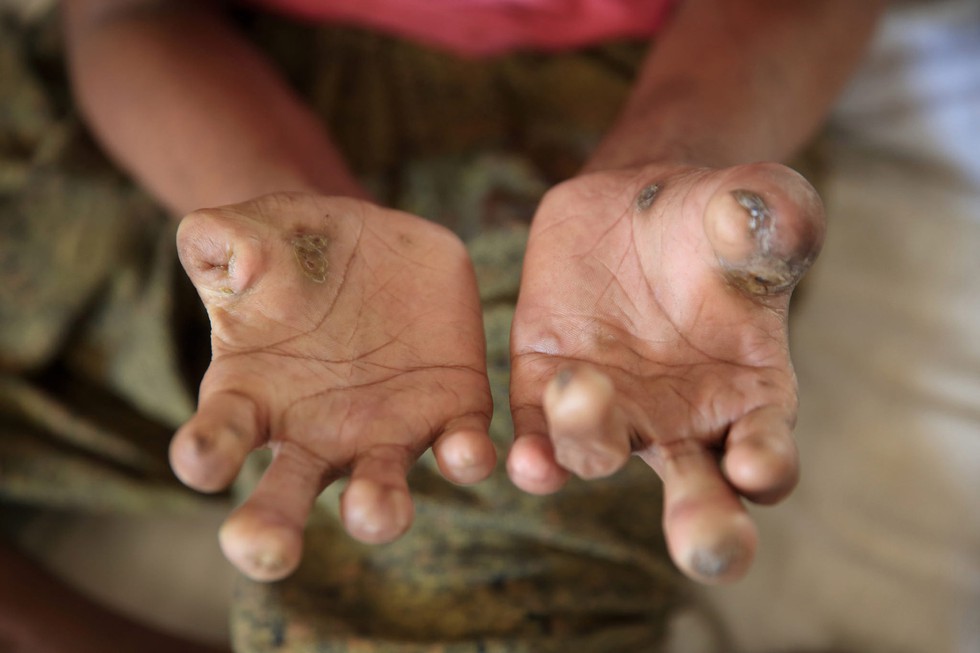
About Leprosy:
- Leprosy, also known as Hansen’s disease, is a chronic infectious disease caused by a type of bacteria, Mycobacterium leprae.
- The disease predominantly affects the skin and peripheral nerves.
- Left untreated, the disease may cause progressive and permanent disabilities.
- Apart from the physical deformity, persons affected by leprosy also face stigmatization and discrimination.
- It is a neglected tropical disease (NTD) that still occurs in more than 120 countries, with more than 200,000 new cases reported each year.
- It is known to occur at all ages, ranging from early childhood to old age.
- Transmission:
- The disease is transmitted through droplets from the nose and mouth of an untreated case of leprosy, containing the causative agent, following prolonged, close contact.
- The disease does not spread through casual contact (like shaking hands or hugging, sharing meals or sitting next to each other).
- The patient stops transmitting the disease upon initiation of treatment.
- Symptoms:
- It usually takes about 3 to 5 years for symptoms to appear after you come into contact with the bacteria that cause leprosy.
- The main symptom of leprosy is disfiguring skin sores, lumps, or bumps that don’t go away after several weeks or months.
- In some cases, body parts may lose their sense of touch and pain, increasing the likelihood of injuries such as cuts and burns.
- Treatment:
- Leprosy is a curable disease.
- The currently recommended treatment regimen consists of three medicines (dapsone, rifampicin and clofazimine) and is referred to as multi-drug therapy (MDT).
Prelims Pointers
Jan. 31, 2025

About Graphics Processing Unit (GPU):
- A GPU is an electronic circuit board that can quickly perform many mathematical calculations.
- Like a Central Processing Unit (CPU), a GPU is also a chip component in computing devices.
- The technology was originally designed to speed up 3-D graphics rendering.
- Since its introduction in the 1990s, the GPU has transformed computer software and video games, allowing programmers to produce vivid and realistic images on screens.
- More recently, GPUs have been used beyond computer graphics in areas including high-performance computing, machine learning, Artificial Intelligence (AI), weather forecasting and cryptocurrency mining.
CPU vs. GPU:
- CPUs are designed to handle general-purpose tasks such as running applications and managing system resources.
- On the other hand, GPUs are optimized for specific tasks such as rendering 3D graphics and video decoding.
- CPUs have fewer cores than GPUs, but each core is capable of handling more complex instructions.
- This means that CPUs can handle sequential tasks more efficiently than GPUs, but GPUs outperform CPUs when it comes to parallel tasks like image rendering or video encoding/decoding.
Prelims Pointers
Jan. 31, 2025

About Axiom-4 Mission (Ax-4):
- Ax-4 is the fourth private astronaut mission to the International Space Station (ISS).
- It is organized by Axiom Space in collaboration with
- The Ax-4 crew will launch aboard a SpaceX Dragon spacecraft to the ISS from NASA’s Kennedy Space Center in Florida.
- Once docked, the private astronauts plan to spend up to 14 days aboard the ISS.
- During their time aboard the ISS, the crew will conduct scientific experiments, perform technology demonstrations, and engage in educational outreach.
- Research areas include materials science, biology, Earth observation and more, with the potential to yield groundbreaking discoveries and innovations.
- The mission will send the first Indian astronaut to the station as part of a joint effort between NASA and the Indian space agency.
- The private mission also carries the first astronauts from Poland and Hungary to stay aboard the ISS.
Prelims Pointers
Jan. 31, 2025
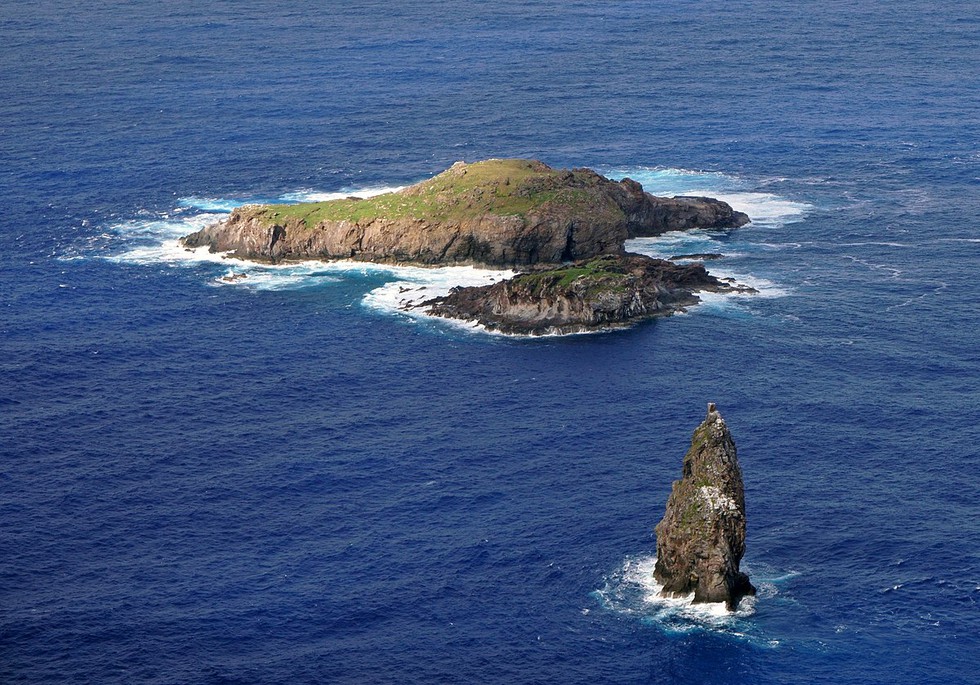
About Point Nemo:
- Point Nemo, also known as the Oceanic Pole of Inaccessibility, holds the distinction of being the farthest point from any landmass on Earth.
- This remote point lies in the South Pacific Ocean and is named after Captain Nemo, the sailor from Jules Verne’s famous novel Twenty Thousand Leagues Under the Sea.
- Situated approximately 2,688 km from the nearest landmass, this isolated point is famous for its extreme remoteness, with the closest human presence often being aboard the International Space Station orbiting above.
- The nearest land in each direction is:
- To the north lies Ducie Island, part of the Pitcairn Islands (British Overseas Territory).
- To the northeast is Motu Nui, one of the Easter Islands (Chilean dependency).
- To the south is Maher Island, part of Antarctica.
- Due to its isolation, the waters around Point Nemo have very little marine life, and the region falls within the South Pacific Gyre, known for having some of the clearest and least biologically active ocean waters.
- Due to its remoteness and relative lack of marine traffic, Point Nemo has become a popular location for space agencies to dispose of space junk.
Prelims Pointers
Jan. 31, 2025
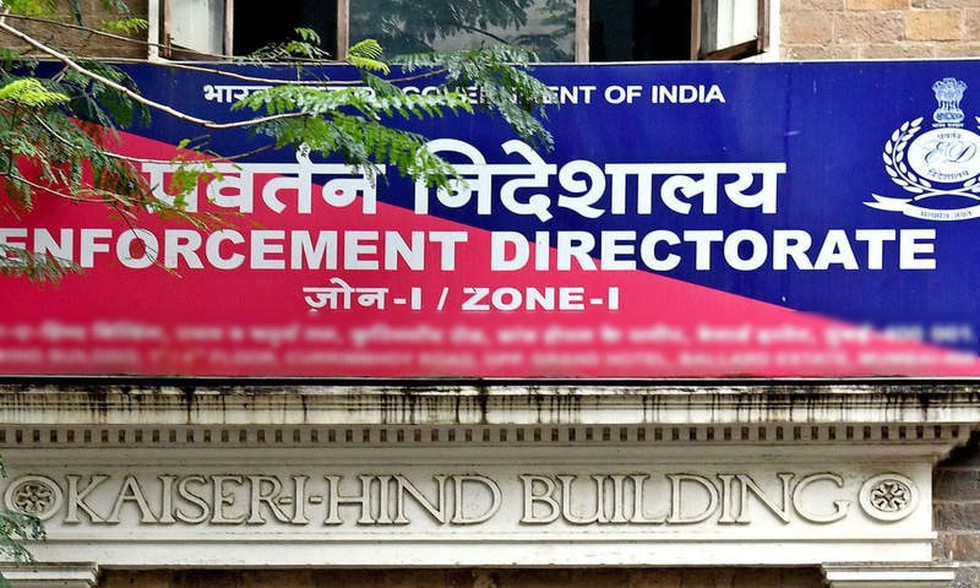
About Enforcement Case Information Report (ECIR):
- The ECIR is a formal entry of the complaint lodged by the Enforcement Directorate (ED).
- It serves as a starting point for ED's proceedings, including the attachment of assets and arrests.
- There is no mention of the ECIR in the Prevention of Money Laundering Act, 2002 (PMLA Act) or Rules.
- However, as per the practice of ED, the ECIR is lodged before taking any action under the PMLA Act.
- The ECIR under the PMLA Act is similar to the First Information Report (FIR) lodged by the Police for cognizable offences.
- However, the Supreme Court held that ECIR cannot be equated with an FIR.
- As per the ED, ECIR is a document meant for the identification of a particular case and for departmental convenience and is purely an internal document.
- ED is not legally bound to provide a copy of the ECIR to the accused.
Prelims Pointers
Jan. 31, 2025
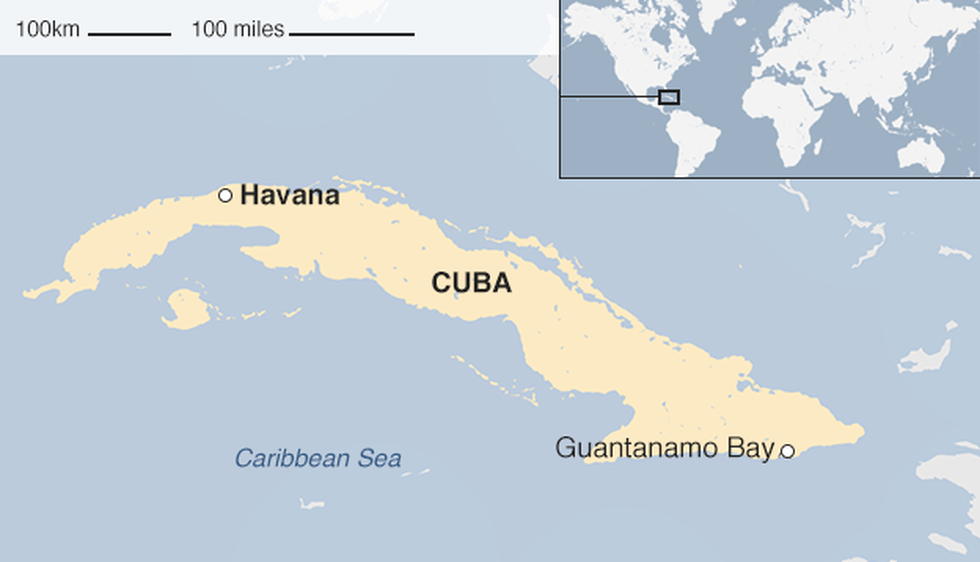
About Guantánamo Bay:
- It forms an inlet of the Caribbean Sea, indenting southeastern Cuba.
- It is a large and well-sheltered bay; it has a narrow entrance to a harbour and is capable of accommodating large vessels.
- Ports: It is served by the ports of Caimanera and Boquerón.
- The strategic importance of the bay—close to the Windward Passage between Cuba and Haiti that links the Atlantic Ocean to the Caribbean Sea and Panama.
- Guantanamo Bay, widely known as “Gitmo,” has been used to house terrorism suspects since the September 11, 2001, attacks, but it also has a small, separate facility known as the Migrant Operations Centre.
- This centre has historically held migrants intercepted while attempting to enter the US by boat, primarily from Haiti and Cuba.
- The facility occupies only a small part of the base and currently lacks the capacity to house the 30,000 detainees.
Prelims Pointers
Jan. 31, 2025
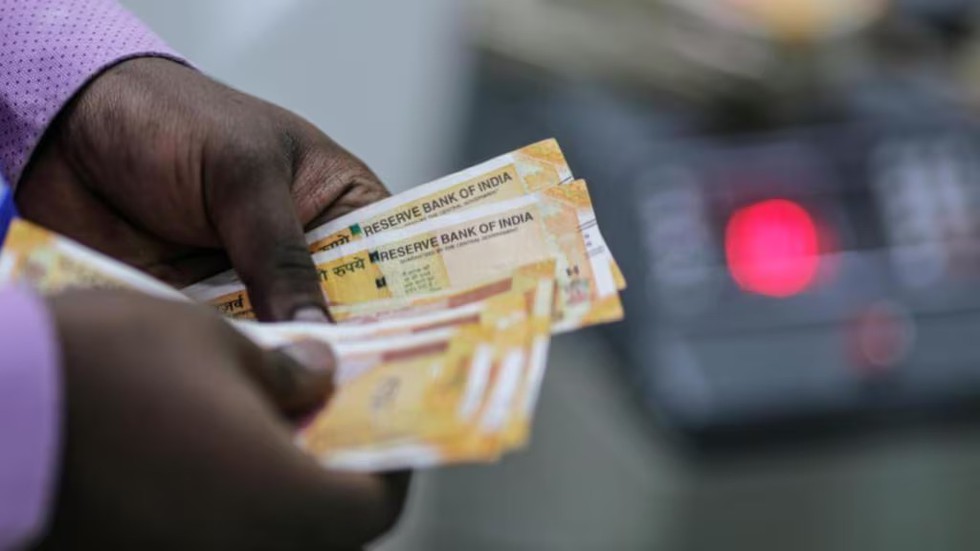
About Household Consumption Expenditure Survey (HCES):
- It is designed to collect information on the consumption and expenditure of households on goods and services.
- The survey provides data required to assess trends in economic well-being and to determine and update the basket of consumer goods and services and weights used for the calculation of the Consumer Price Index. Data collected in HCES is also used to measure poverty, inequality and social exclusion.
- The Monthly Per Capita Consumption Expenditure (MPCE) compiled from HCES is the primary indicator used for most analytical purposes.
Key Highlights of the Survey
- There is a persistent decline in urban-rural consumption difference across India’s major States continues in 2023-24.
- The average MPCE is on the rise across all Household types in rural and urban Areas.
- Among 18 major states, the difference between urban and rural average monthly per capita expenditure (MPCE) of households is the lowest in Kerala, followed by Punjab, Andhra Pradesh (AP) and Bihar.
- Consumption inequality, both in rural and urban areas, for almost all the 18 major states has declined in 2023-24 from the level of 2022-23.
- At the all-India level, the Gini coefficient of consumption expenditure has declined to 0.237 in 2023-24 from 0.266 in 2022-23 for rural areas and to 0.284 in 2023-24 from 0.314 in 2022-23 for urban areas.
Prelims Pointers
Jan. 31, 2025
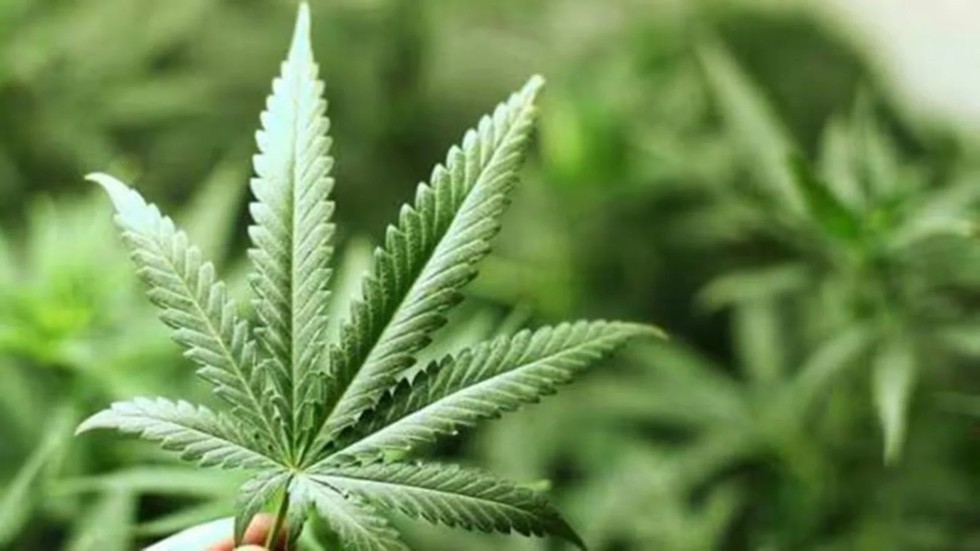
About Controlled Cannabis Cultivation:
- It is the regulated cultivation of specific cannabis varieties having minimal intoxicating properties, along with strict monitoring to prevent misuse. Such varieties are commonly known as
- The tetrahydrocannabinol (THC) cannabinoid content (a kind of chemical that has an intoxicating effect) in controlled cannabis should be less than or equal to 3 per cent.
- Under this, authorities focus on its non-narcotic applications, particularly in the pharmaceutical and industrial sectors.
- Uses of Hemp: Hemp’s stalks, leaves, and seeds can also be converted into textile, paper, food, cosmetics, biofuel and more. Additionally, cannabidiol (CBD) compounds in the plant are effective in treating chronic pain.
Laws related to cannabis cultivation in India
- Cannabis cultivation is largely prohibited in India due to its psychoactive properties.
- Section 2 of the Narcotic Drugs and Psychotropic Substances (NDPS) Act, 1985, prohibits the production and sale of cannabis resin and flowers.
- It defines charas as the separated resin, in any form (crude or purified), obtained from the cannabis plant. It also includes concentrated preparations such as hashish oil or liquid hashish.
- However, it provides exceptions for cannabis cultivation and use for industrial and medicinal purposes under government regulation.
- Section 10 of the Act allows state governments to regulate, permit, or prohibit cannabis cultivation for medicinal and scientific purposes.
- Additionally, Section 14 grants the Central government the power to authorise and regulate cannabis cultivation for research or other approved purposes.
Prelims Pointers
Jan. 31, 2025
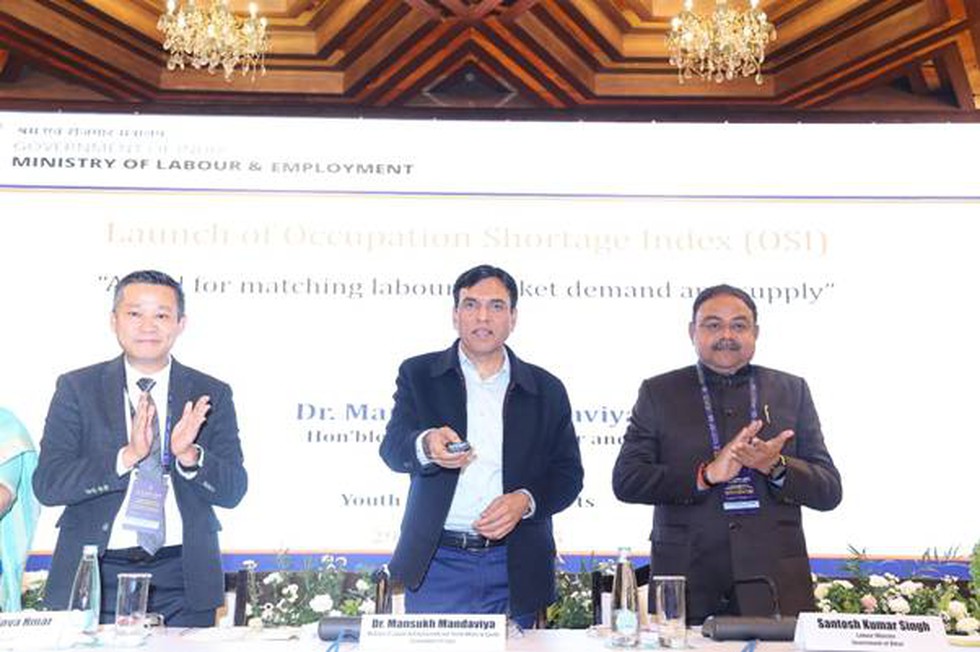
About e-Shram Microsite:
- It is a transformative initiative aimed at ensuring that unorganised workers have seamless access to both State and Central government welfare programs.
- Features
- These microsites are state-specific digital platforms seamlessly integrated with the national e-Shram database.
- It will facilitate two-way integration between State portals and the eShram portals and will facilitate simplified registration of unorganised workers.
- This will provide a one-stop solution for seamless access to both Central and State welfare programs for unorganised workers, employment opportunities, skilling programmes, etc.
- For States/UTs, the microsites provide a ready-to-use digital infrastructure, reducing the need for costly and time-consuming development processes. With real-time analytic dashboards, they facilitate better policy decision-making and allow States to include tools specific to their labour market requirements.
- It offers a seamless registration process and access to a wide range of social security benefits.
- The platform ensures multilingual accessibility, enabling workers from different regions to access information and services in their preferred language.
- Through two-way integration with the e-Shram database, workers receive real-time updates on welfare schemes and employment opportunities.
- Significance: It will enhance transparency and efficiency in welfare service delivery.
About Occupational Shortage Index (OSI):
- It provides data-driven insights into occupations facing shortages, helping align job seekers' skills with industry demands.
- The OSI will support policymakers, training institutions, and businesses in bridging skill gaps in high-demand sectors.
- The index is designed to enable more effective decision-making in workforce planning and skill development initiatives, optimizing job matching and guiding State governments and employers in creating targeted skill development programs.
Prelims Pointers
Jan. 31, 2025
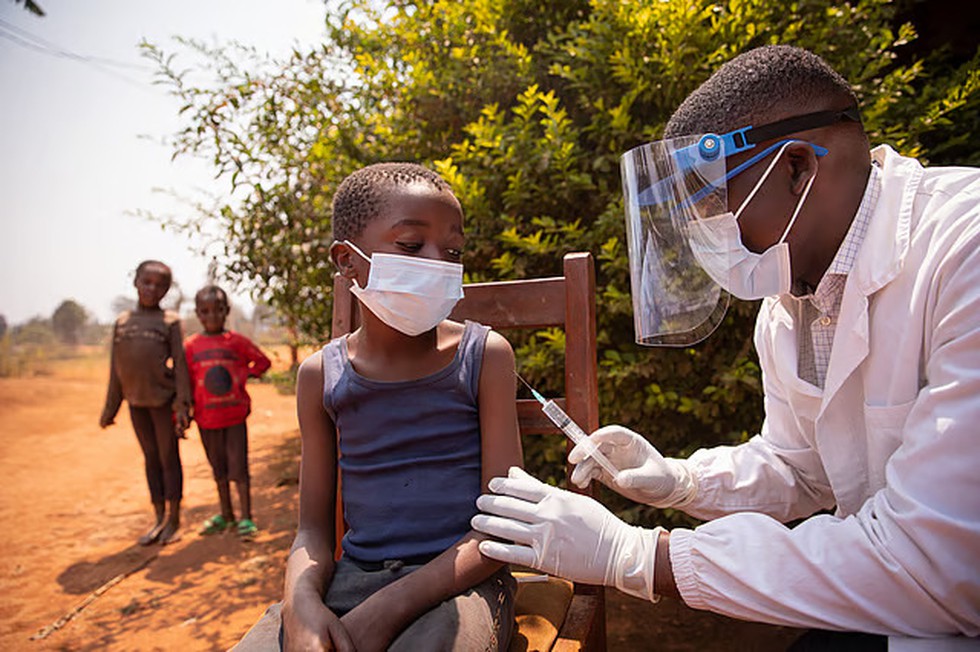
About Human African Trypanosomiasis:
- It is a parasitic disease transmitted through the bite of infected tsetse flies.
- It is also known as sleeping sickness and is endemic in sub-Saharan Africa.
- Symptoms:
- It initially presents with symptoms such as fever, headaches, and joint pain, but can progress to neurological issues like confusion, disrupted sleep, and behavioural changes. If left untreated, the disease can be fatal.
- First signs and symptoms emerge a few weeks or months after infection. The disease develops rapidly with multi-organ invasion, including the brain.
- It takes 2 forms, depending on the subspecies of the infecting parasite:
- Trypanosoma brucei gambiense: It is found in 24 countries of west and central Africa, currently accounts for 92% of reported cases and causes a chronic illness.
- A person can be infected for months or even years without major signs or symptoms. When evident symptoms emerge, often the disease is advanced with the central nervous system already affected.
- Trypanosoma brucei rhodesiense: It is found in 13 countries of eastern and southern Africa accounts for 8% of reported cases and causes an acute disease.
- It is more prevalent amongst rural populations which depend on agriculture, fishing, animal husbandry or hunting are the most exposed.
- To date, WHO has validated the elimination of the gambiense form of HAT in seven countries: Togo (2020), Benin (2021), Ivory Coast (2021), Uganda (2022), Equatorial Guinea (2022), Ghana (2023) and Chad (2024).
Jan. 30, 2025
Prelims Pointers
Jan. 30, 2025

About BHASHINI Platform:
- BHASHINI, or the BHASHa INterface for India, is India's Artificial Intelligence (AI) - led language translation platform, breaking down language barriers and enabling conversations between speakers of different Indian languages.
- It aims to enhance internet accessibility and digital services in Indian languages, incorporating voice-based functions and promoting content creation in diverse languages.
- Launched in July 2022 under the National Language Translation Mission (NLTM), it aims to provide technology translation services in 22 scheduled Indian languages.
- It aims to make Artificial Intelligence and Natural Language Processing (NLP) resources available in the public domain to be used by Indian MSMEs, startups and individual innovators.
- It is implemented by the Digital India BHASHINI Division, a division under the Digital India Corporation, a Section 8 Company of the Ministry of Electronics and Information Technology.
- The platform is accessible through dedicated Android and iOS apps, providing a user-friendly experience.
- This online platform also has a separate ‘Bhasadaan’ section which allows individuals to contribute to multiple crowdsourcing initiatives.
Prelims Pointers
Jan. 30, 2025
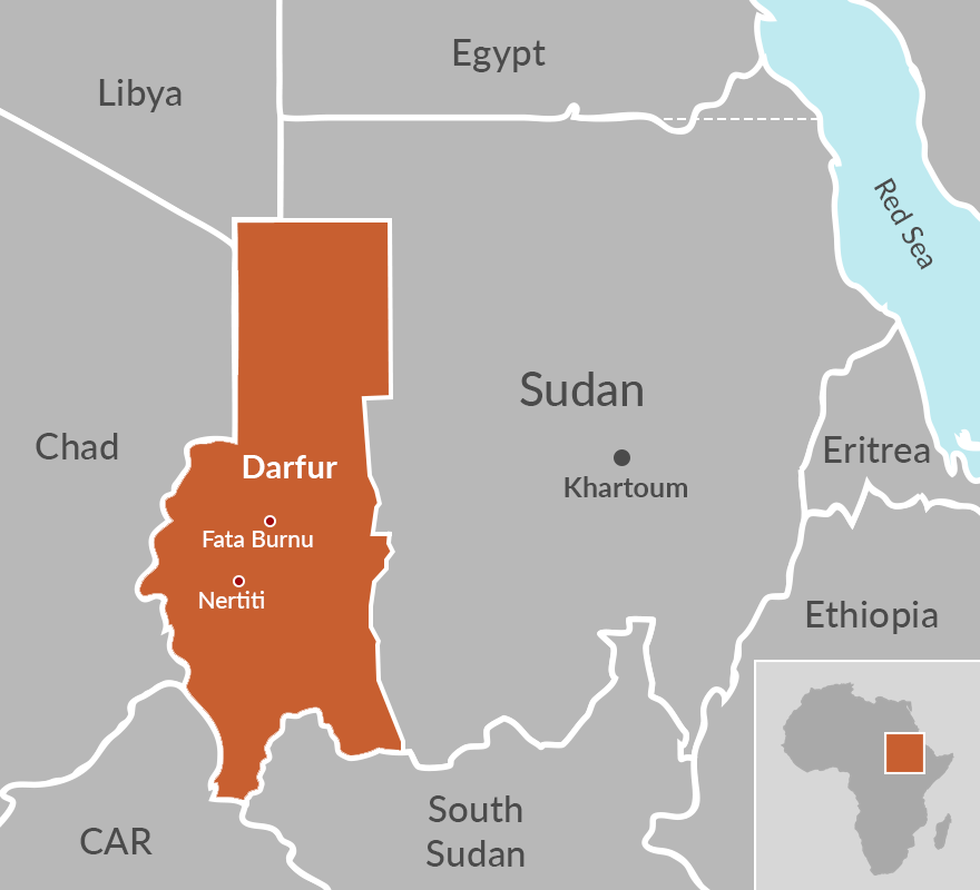
About Darfur Region:
- Darfur is a region in western Sudan.
- It lies between Kordofan to the east and Wadai to the west and extended southward to the Al-Ghazāl (Gazelle) River and northward to the Libyan Desert.
- It consists of an immense rolling plain that has an area of approximately 440,000 sq.km.
- The volcanic highlands of the Marrah Mountains dominate the central part of this plain.
- It was an independent sultanate until annexed by Sudan in 1916.
- The name “Darfur” is derived from “dar fur,” meaning “the land of the Fur” in Arabic.
- Population:
- The Fur tribe once ruled the Islamic Sultanate of Darfur until the killing in 1916 of the last Sultan of Darfur.
- It is home to approximately 80 tribes and ethnic groups, encompassing both nomadic and sedentary communities.
- Arabs have long constituted the majority of the population in the northern part of Darfur, while Arabs and Fur have predominated in the southern portion.
- Other ethnic groups have included the Beja, Zaghawa, Nubian, and Daju peoples.
Prelims Pointers
Jan. 30, 2025
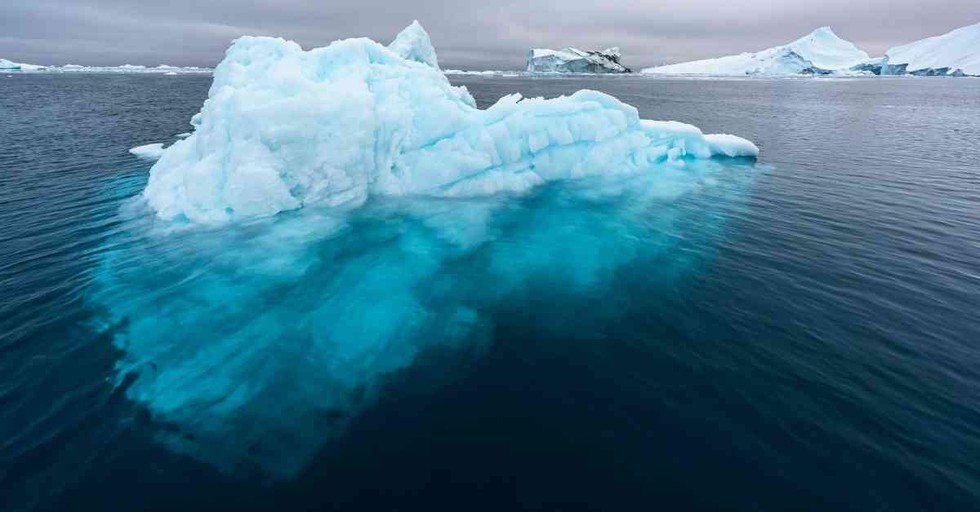
About Kara Sea:
- It is a marginal sea of the Arctic Ocean, located to the north of Siberia, Russia.
- It covers an area of 880,000 sq.km.
- It has been named after the Kara River.
- It is situated between the Franz Josef Land, the Novaya Zemlya islands, and the Severnaya Zemlya archipelago.
- The Kara Strait and the Novaya Zemlya archipelago separate the Kara Sea from the Barents Sea in the west.
- In the east, the Severnaya Zemlya archipelago separates the Kara Sea from the Laptev Sea.
- In the north, the Kara Sea is also connected with the Arctic Basin.
- It is regarded as one of the world’s coldest seas and remains covered with ice from September to May.
- Different rivers, including the Kara, Ob, Pyasina and Yenisei drain into the Kara Sea.
- The significant islands that are found here include Bely, Dikson, Kamennyye, Oleni and Taymyr.
- The Nordenskiold Archipelago, which is composed of more than 90 islands and five large island subgroups, is the largest island group in the Kara Sea.
Prelims Pointers
Jan. 30, 2025

About Kanha Tiger Reserve:
- Kanha Tiger Reserve, also called Kanha National Park, is located in the Mandla and Balaghat districts of Madhya Pradesh.
- It is the largest national park of Madhya Pradesh.
- It lies within a series of plateaus in the Maikal hills, east of the Satpura range.
- It was created on June 1, 1955, and in 1973, it was made the Kanha Tiger Reserve.
- It sprawls over an area of 940 sq.km.
- It is characterized mainly by forested shallow undulations, hills with varying degrees of slopes, plateaus and valleys.
- The forest depicted in the famous novel by Rudyard Kipling, The Jungle Book, is thought by some to be based on jungles, including this reserve.
- The region is known for some of the ancient tribal communities, like the Gond and Baiga, which still inhabit the region.
- It is also the first tiger reserve in India to officially introduce a mascot, "Bhoorsingh the Barasingha".
- Flora: It is primarily a moist Sal and moist mixed deciduous forest where Bamboo, Tendu, Sal, Jamun, Arjun, and Lendia flourish.
- Fauna:
- It has a significant population of Royal Bengal Tiger, leopard, sloth bear, and Indian wild dog.
- It is respected globally for saving the Barasingha (the State animal of Madhya Pradesh) from near extinction, and has the unique distinction of harbouring the last world population of this deer species.
Prelims Pointers
Jan. 30, 2025

About Ghaggar River:
- The Ghaggar River is an intermittent river that flows in India and Pakistan (Hakra).
- The river flows only during the monsoon season.
- It originates in the Shivalik Hills of Himachal Pradesh and flows through Haryana and Rajasthan before disappearing into the Thar Desert.
- This seasonal river feeds two irrigation canals that extend into Rajasthan.
- The Hakra, which flows in Pakistan, is the continuation of the Ghaggar River in India, and they are together called the Ghaggar-Hakra River.
- Historical Significance:
- Several historians identify Ghaggar with the Vedic Saraswati River.
- Along the banks of the Ghaggar River, many settlements of the Indus Valley Civilization have been excavated.
- It is believed that the rivers Sutlej and Yamuna once flowed into the Ghaggar-Hakra river bed.
- Tributaries: The main tributaries of the Ghaggar are the Kaushalya, Markanda, Sarsuti, Tangri and Chautang.
Prelims Pointers
Jan. 30, 2025
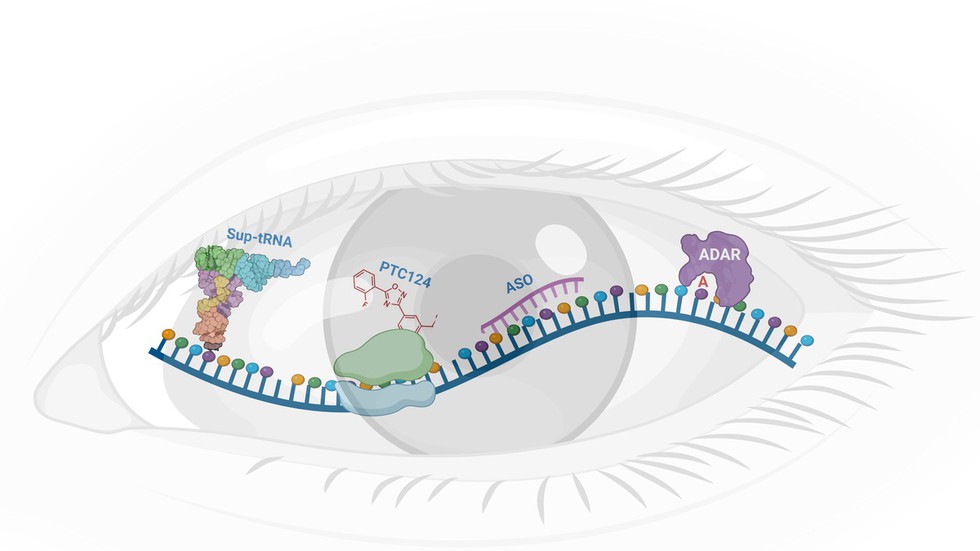
About RNA Therapy:
- It is a term used to describe the use of RNA-based molecules to modulate biological pathways to cure a specific condition.
- Unlike gene-editing therapies, RNA-based therapies offer a safer alternative as they make temporary changes that do not carry over to future generations, reducing the risk of unintended long-term effects.
Applications of RNA based Therapies:
- RNA-editing with ADAR enzymes: It can correct specific genetic mutations at the RNA level. This method has the potential to restore protein production in retinal cells without altering the underlying DNA, offering a new way to treat retinal degenerative diseases caused by single-point mutations.
- Using of suppressor tRNAs: It is to bypass stop-codon mutations, which can prematurely halt protein synthesis in retinal cells. By enabling the production of full-length proteins, this approach could help restore proper retinal function in IRD patients.
- PTC124 Method: It is also known as ataluren, which is already being used to treat patients with cystic fibrosis and Duchenne muscular dystrophy.
- Antisense oligonucleotides (ASOs) have already been used successfully to treat diseases such as spinal muscular atrophy and Duchenne muscular dystrophy.
Prelims Pointers
Jan. 30, 2025

About Silicon carbide:
- It is synthetically produced crystalline compound of silicon and carbon.
- Its chemical formula is SiC and it is the most widely used non-oxide ceramic.
- It was discovered by the American inventor Edward G. Acheson in 1891.
- Properties:
- It is the hardest ceramic material and has excellent thermal conductivity but low thermal expansion.
- It has excellent mechanical properties and excellent resistance to wear and oxidation.
- It is also classed as a semiconductor, having an electrical conductivity between that of metals and insulating materials.
- Applications:
- Its primary application is as an abrasive because of its high hardness, which is surpassed only by diamond, cubic boron nitride, and boron carbide.
- It is a promising ceramic material with excellent thermo mechanical characteristics.
- It is used in refractory linings and heating elements for industrial furnaces, in wear-resistant parts for pumps and rocket engines.
- It is also used in semiconducting substrates for light-emitting diodes.
Prelims Pointers
Jan. 30, 2025

About Mutual Credit Guarantee Scheme:
- It will provide 60 percent guarantee coverage by the National Credit Guarantee Trustee Company Limited (NCGTC) to Member Lending Institutions (MLIs) for financing the eligible MSMEs, needed to purchase the equipment/machineries.
- Salient Features:
- Borrower should be an MSME with valid Udyam Registration Number;
- It provides a loan guarantee up to Rs 100 crore, with a minimum of 75 percent of the project cost allocated for equipment or machinery.
- Under the scheme for loans up to 50 crore shall have repayment period of up to 8 years with up to 2 years moratorium period on principal instalments.
- For loans above 50 crore, higher repayment schedule and moratorium period on principal instalments can be considered.
- Upfront (initial) contribution of 5% of the loan amount shall be deposited at the time of application of guarantee cover.
- Annual Guarantee Fee on loan under the Scheme shall be Nil during the year of sanction. During the next 3 years, it shall be 1.5% p.a. of loan outstanding as on March 31 of previous year. Thereafter, Annual Guarantee Fee shall be 1% p.a. of loan outstanding as on March 31 of previous year.
- The Scheme will be applicable to all loans sanctioned under MCGS-MSME during the period of 4 years from the date of issue of operational guidelines of the scheme or till cumulative guarantee of Rs. 7 lakh crores are issued, whichever is earlier.
Prelims Pointers
Jan. 30, 2025

About F11 Bacteria:
- F11 bacteria (Labrys portucalensis) are a strain of aerobic bacterium from the Xanthobacteraceae family.
- They have adapted to survive in harsh, polluted environments by using contaminants as energy sources.
- These bacteria were originally isolated from contaminated industrial soil in Portugal.
- They can break down and transform at least three types of per- and poly-fluoroalkyl substances (PFAS), and some of the toxic byproducts.
What are forever chemicals?
- These are toxic, man-made, hazardous chemicals that have dangerous effects on the environment and our health.
- They are called “forever chemicals” because of their tendency to stick around in the atmosphere, rainwater and soil for long periods of time.
- They are known to stay in the environment virtually forever and contribute to environmental degradation which adversely impacts the health of all organisms including human beings.
- They can migrate to the soil, water and air during their production and use.
- They are listed in the Stockholm Convention.
Prelims Pointers
Jan. 30, 2025
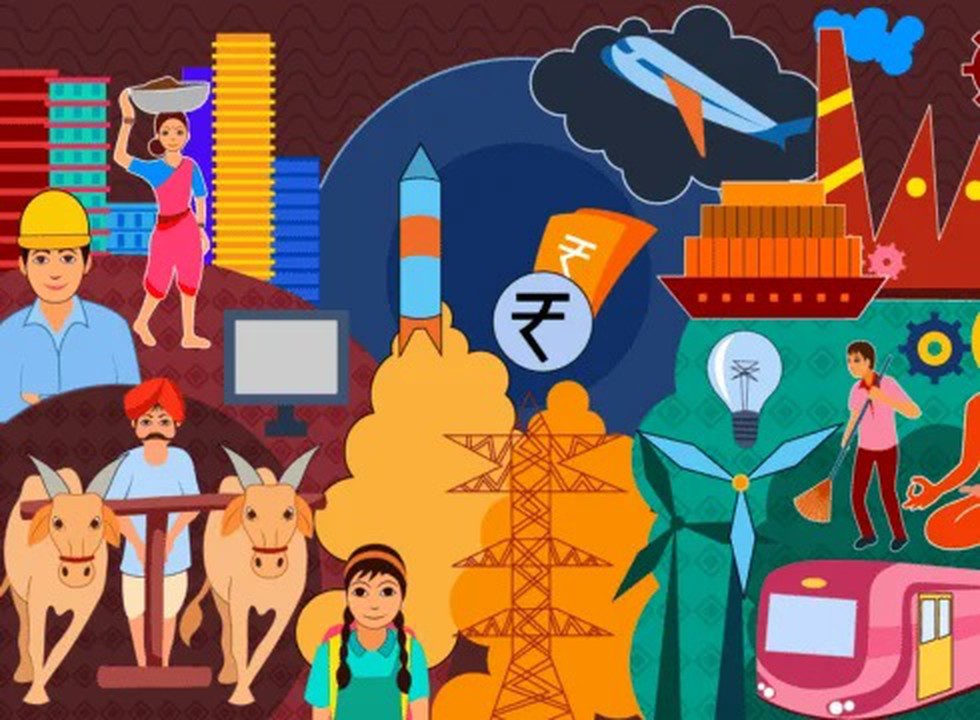
About the MSME TEAM Initiative:
- It has been launched under the "Raising and Accelerating MSME Productivity (RAMP)" Programme.
- It is aimed to enable MSMEs to embrace digital commerce and expand their market presence.
- Funding: The initiative has a budget of ₹277.35 crore over 3 years.
- Targeted beneficiaries: It will cover 5 lakh micro and small enterprises, with 50 per cent of these being women-led businesses.
- It will focus on:
- Connecting MSMEs with the ONDC Network
- Providing access to digital storefronts, integrated payment systems and logistics support
- Reducing operational barriers and helps businesses tap into wider customer bases
- Formalizing operations and establishing digital transaction histories, which will enhance the credibility and trust of participating MSMEs
- Over 150 workshops will be held across Tier 2 and Tier 3 cities, targeting key MSME clusters, with special attention to women and SC/ST-led enterprises.
- Significance: These workshops will guide businesses through the process of joining the ONDC Network, creating compliant digital catalogues and using the ecosystem to its full potential.
Jan. 29, 2025
Prelims Pointers
Jan. 29, 2025
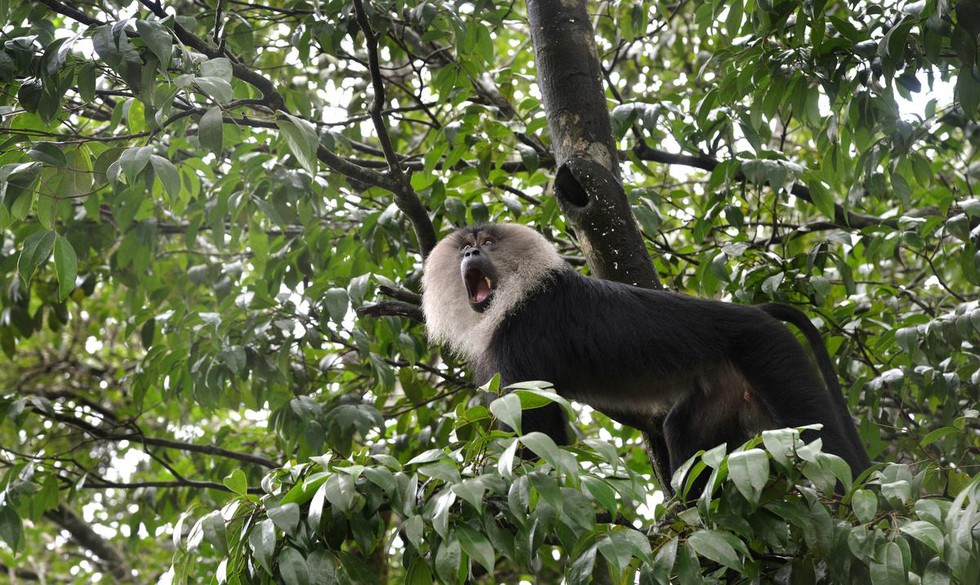
About Sharavathy Lion-Tailed Macaque Sanctuary:
- It is located in the Sharavathi River Valley of Sagar taluk in Shivamogga District, Karnataka.
- It lies in the Western Ghats and is mainly covered with evergreen and semi-evergreen forests in the valleys and grassy patches on hilltops.
- It was formed by combining the existing Sharavathi Valley Wildlife Sanctuary, Aghanashini Lion-Tailed Macaque Conservation Reserve, and the adjoining reserve forest blocks.
- The sanctuary shares its southwestern boundary with the Mookambika Wildlife Sanctuary.
- Flora: It is immensely rich in species like Dhoopa, Gulmavu, Surahonne, Mavu, Nandi, etc.
- Fauna:
- It is considered as a key habitat for protecting the endangered Lion-Tailed Macaque (Macaca silenus), endemic to the Western Ghats.
- Other mammals include tiger, leopard, wild dog, jackal, sloth bear, spotted deer, sambar, barking deer, mouse deer, wild pig, common langur, bonnet macaque, Malabar giant squirrel, etc.
Prelims Pointers
Jan. 29, 2025

About UNRWA:
- It is a UN agency that supports the relief and human development of Palestinian refugees.
- Establishment:
- It was established by United Nations General Assembly Resolution 302 (IV) of 8 December 1949. The agency began operations on 1 May 1950.
- Objective: To provide relief, health, and education services for Palestinians who lost both their homes and their means of livelihood during the Arab-Israeli wars following the establishment of the State of Israel in 1948.
- In the absence of a solution to the Palestine refugee problem, the General Assembly has repeatedly renewed UNRWA's mandate, most recently extending it until 30 June 2026.
- Headquarters:
- It was originally headquartered in Beirut, Lebanon, but was moved to Vienna, Austria in 1978.
- In 1996, the General Assembly moved the agency to the Gaza Strip to demonstrate the Assembly’s commitment to the Arab-Israeli peace process.
- UNRWA is unique among UN agencies in that it delivers services directly.
- Its services encompass education, health care, relief and social services, camp infrastructure and improvement, microfinance and emergency assistance, including in times of armed conflict.
- It supports more than five million registered Palestinian refugees, and their patrilineal descendants, who fled or were expelled from their homes during the 1948 Palestine war as well as those who fled or were expelled during and following the 1967 Six Day war.
- Fields of operations: It provides services in its five fields of operations: Jordan, Lebanon, Syria, Gaza Strip and the West Bank, including the East of Jerusalem.
- Funding:
- UNRWA is funded almost entirely by voluntary contributions from UN member states.
- It also receives some funding from the regular budget of the UN.
- UNRWA reports only to the UN General Assembly.
Prelims Pointers
Jan. 29, 2025
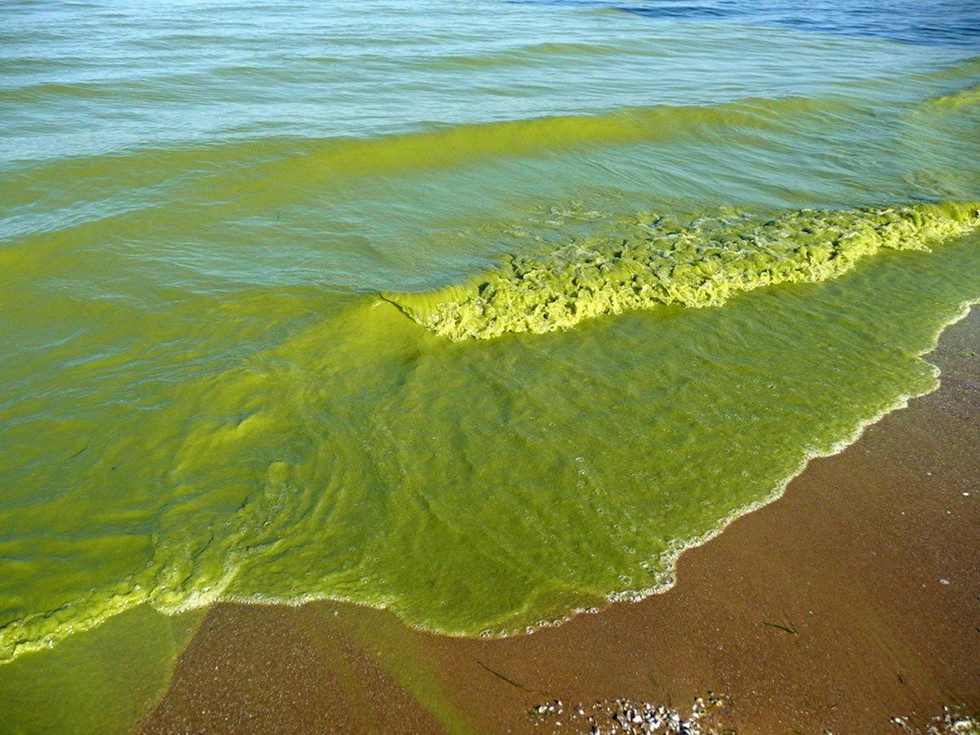
About Harmful Algal Blooms (HABs):
- Certain environmental conditions in water bodies can intensify algae growth, causing algal blooms.
- The excessive algal growth becomes visible to the naked eye and can be green, blue-green, red, or brown, depending on the type of algae.
- Algal blooms can happen in fresh, marine (salt), and brackish (a mixture of fresh and salt) water.
- Not all algal blooms are harmful. Most blooms are beneficial because the tiny plants are food for animals in the ocean.
- Blooms with the potential to harm aquatic ecosystems and human health are referred to as HABs.
Why do HABs occur?
- Certain environmental conditions, such as warmer water temperatures in the summer and excessive nutrients from fertilizers or sewage waste brought by runoff, trigger HABs.
- Many different types of algae can cause HABs. However, three types—cyanobacteria, dinoflagellates and diatoms—cause most blooms that make people and animals sick.
What are impacts from HABs?
- HABs can produce toxins which can result in acute or chronic disease in most vertebrates, depending on the type of toxin and amount of toxin absorbed.
- They can damage the environment by depleting the oxygen in the water, which can kill fish and other living creatures.
- HABs that bloom near the water surface can also block sunlight from reaching organisms deeper in the water.
Prelims Pointers
Jan. 29, 2025

About Asteroids:
- Asteroids, sometimes called minor planets, are the rocky remnants of material leftover from the formation of the solar system and its planets approximately 4.6 billion years ago.
- They orbit the Sun in highly flattened, or "elliptical" circles, often rotating erratically, tumbling and falling through space.
- The majority of asteroids originate from the main asteroid belt, a region between the orbits of Mars and Jupiter.
- Asteroids are found in other places, too. For example, some asteroids are found in the orbital path of planets.
- This means that the asteroid and the planet follow the same path around the sun.
- Earth and a few other planets have asteroids like this.
- Asteroids are also found in the Kuiper Belt, a region of icy bodies that orbit the sun beyond Neptune.
- Although asteroids orbit the Sun like planets, they are much smaller than planets.
- More than 150 asteroids are known to have a small companion moon (some have two moons).
- There are also binary (double) asteroids, in which two rocky bodies of roughly equal size orbit each other, as well as triple asteroid systems.
International Asteroid Discovery Project (IADP):
- It is a program affiliated with NASA’s International Astronomical Search Collaboration (IASC).
- It is a citizen science program which lets participants discover asteroids by using software and datasets.
- The citizen-scientists can make original astronomical discoveries and participate in hands-on astronomy.
- The participants are provided with datasets from IASC, which they have to download. Calibrating them on Astronomica Software, they then have to look for asteroids.
Prelims Pointers
Jan. 29, 2025
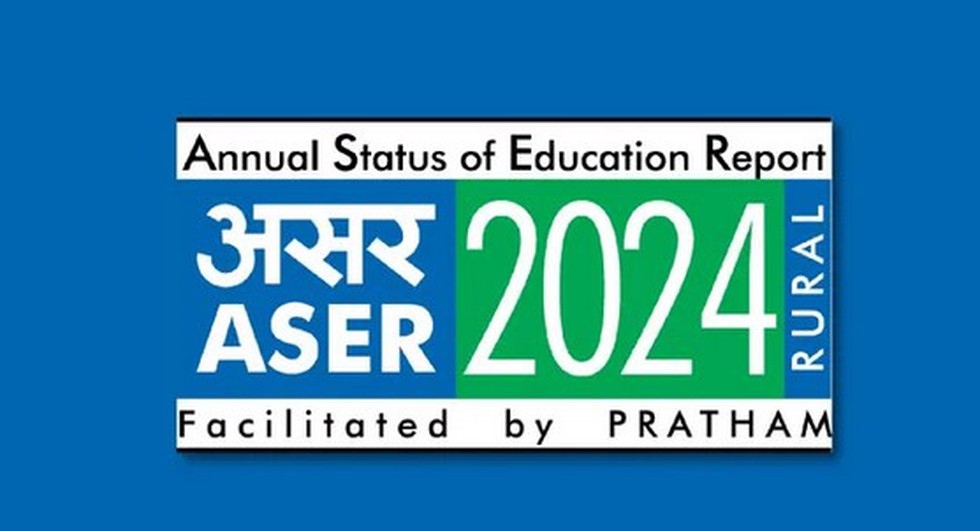
About Annual Status of Education Report (ASER):
- It is an annual citizen-led survey that provides reliable estimates of children’s schooling and learning levels in rural India.
- It is published by the Pratham, an NGO, and the survey has been conducted every year since 2005.
- In 2016, ASER switched to an alternate-year model where the ‘basic’ ASER is conducted in all rural districts of the country every other year rather than annually.
- In the gap years, a smaller survey (typically 1-2 districts per state) focuses on other age groups and domains.
- The ‘basic’ ASER survey tracks enrollment for children aged 3-16 and assesses basic reading and arithmetic of children aged 5-16.
- ASER is a household-based rather than school-based survey.
- This design enables all children to be included those who have never been to school or have dropped out; those who are in government schools, private schools, religious, or other types of schools; and those who are absent from school on the day of the assessment.
Highlights of ASER 2024:
- During the pandemic years, there was a big jump in government school enrolment, with the proportion of 6–14-year-old children enrolled in government schools rising from 65.6 percent in 2018 to 72.9 per cent in 2022. This number is back to 66.8 percent in 2024.
- Private school enrolment has been steadily rising since 2006 in rural India.
- The proportion of 6-14-year-olds enrolled in private schools rose from 18.7 percent in 2006 to 30.8 percent in 2014 and stayed at that level in 2018.
- The report also noted that not only has there been a full recovery from the pandemic-induced learning loss, the learning levels in the primary grades are higher than past levels in some cases.
- The percentage of Class 3 children who can perform at least subtraction at the basic arithmetic level was 33.7% in 2024, up from 25.9% in 2022 and higher than the pre-pandemic rate of 28.2% in 2018.
- While private schools saw a rise of about 4 percent, government schools saw a sharper 7 percent surge in this field.
- The percentage of Class 5 children who can now read a text at the Class 2 level was 44.8% in 2024, up from 38.5% in 2022 and nearly matching the 2018 rate of 44.2%.
- However, this percentage has not yet reached pre-pandemic levels at private schools; in 2024, it was 59.3%, up from 56.8% in 2022, but still less than 65.1% in 2018.
- More than 82 percent of children in the 14-16 age group know how to use a smartphone, but only 57 percent of them use it for educational purposes.
- The data in the report shows that both teacher and student attendance in government elementary schools has increased.
- From 72.4% in 2018 to 73% in 2022 to 75.9% in 2024, the average student attendance rose.
- Meanwhile, from 85.1% in 2018, the average teacher attendance rose to 86.8% in 2022 and 87.5% in 2024.
- In pre-primary schools for children aged 5, Karnataka, Gujarat, Maharashtra, Kerala, and Nagaland are among the states with enrollment rates above 90%.
Prelims Pointers
Jan. 29, 2025
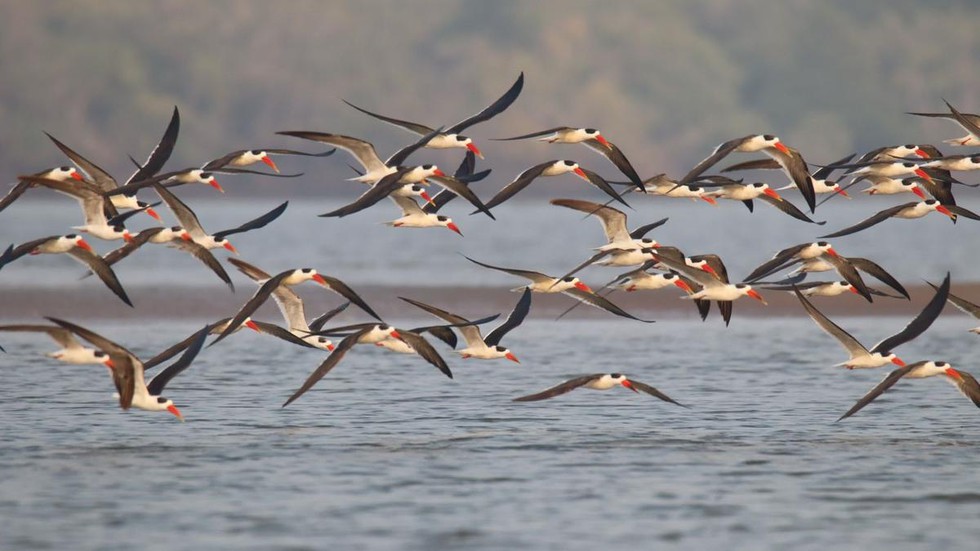
About Asian Waterbird Census:
- It is a citizen-science programme that supports the conservation and management of wetlands and waterbirds worldwide.
- It is conducted annually to monitor the population of waterbirds in the Asian region, and is part of the global International Waterbird Census (IWC), coordinated by the Wetland International.
- It was initiated in 1987 and has grown rapidly to cover major region of Asia, from Afghanistan eastwards to Japan, Southeast Asia and Australasia.
- The census thus covers the entire East Asian – Australasian Flyway and a large part of the Central Asian Flyway.
- In India, it is conducted under the aegis of the Bombay Natural History Society (BNHS) and the Wildlife Institute of India (WII) in early January.
What is Bombay Natural History Society?
- It is a Non-Governmental Organisation in India, engaged in conservation and biodiversity research.
- It has been designated as a 'Scientific and Industrial Research Organisation' by the Department of Science and Technology. It is the partner of BirdLife International in India.
Prelims Pointers
Jan. 29, 2025

About ‘When-listed’:
- It has been launched for trading of shares of companies that have finished their Initial Public Offering (IPO) and are yet to be listed on stock exchanges.
- It is aimed at reducing the activity in the grey market, which is unregulated and has a significant influence on listings.
- Present timeline of listing shares in India:
- Once the IPO is closed, shares have to be listed on trading platforms in trading plus three working days (T+3), with T being the closing day of the offer. The allotment of shares is done on T+1 day.
- In the period between the allotment of shares and listing day, investors trade in the grey market.
What is Grey Market?
- It refers to an unofficial trading of securities even before they are listed on a stock exchange. This is an unregulated market and works on demand and supply.
- Many investors look at the premium offered in the grey market for stock of a company which has launched an IPO, before considering investing in the offer.
Prelims Pointers
Jan. 29, 2025

About Lezim Dance:
- It is a folk dance from
- It gets its name after a musical instrument - a unique wooden stick, with jingling cymbals attached to it that the dancers carry while performing the dance. The dance is accompanied by a dhol or dhalgi (small dhol).
- Lezim is a kind of musical instrument which was traditionally used in all folk dances but today it is primarily used in Ganesha procession.
- Lezim dance is a rigorous physical exercise in which the formations are in twos and fours and sometimes even a circle.
- There are no winds or string instruments accompanying it, often there is no song accompaniment either, but sometimes, a song can be sung.
Who was Chhatrapati Sambhaji Maharaj?
- He was the eldest son of Chhatrapati Shivaji Maharaj.
- He came to power following a bloody succession battle with his half-brother Rajaram in 1681.
- The Mughal emperor Aurangzeb (1618-1707) was his contemporary whose plan to extend the Mughal empire towards the Deccan often resulted in clashes with the Marathas.
Prelims Pointers
Jan. 29, 2025
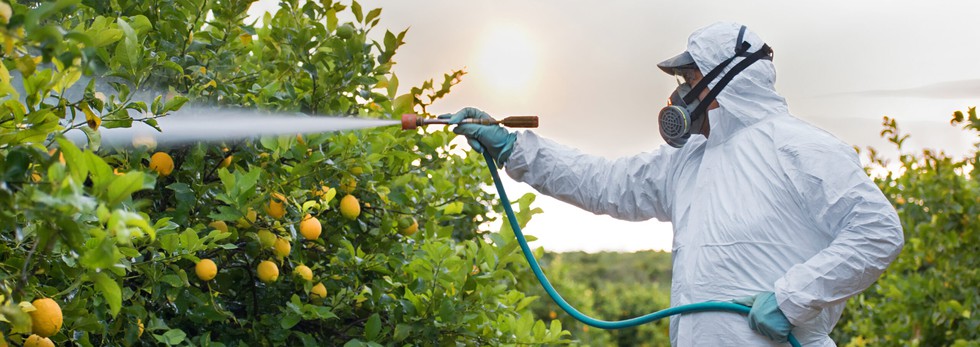
About Organophosphate:
- It is a chemical that is used in pesticides and insecticides, and absorbed through inhalation and ingestion.
- It is formed through the esterification process involving phosphoric acid and alcohol.
- It is generally used to protect crops from pests and even to control the spread of disease by insects and have extensive application in manufacturing plastics and solvents.
- Impact on human Health:
- It disrupts the transmission of nerve signals in exposed organisms, which is fatal.
- Certain organophosphates have caused a different kind of neurotoxicity consisting of damage to the afferent fibers of peripheral and central nerves and associated with inhibition of “neuropathy target esterase”.
What is Esterification?
- It is a chemical reaction in which alcohol and acid combine to create an ester as the main product.
Prelims Pointers
Jan. 29, 2025
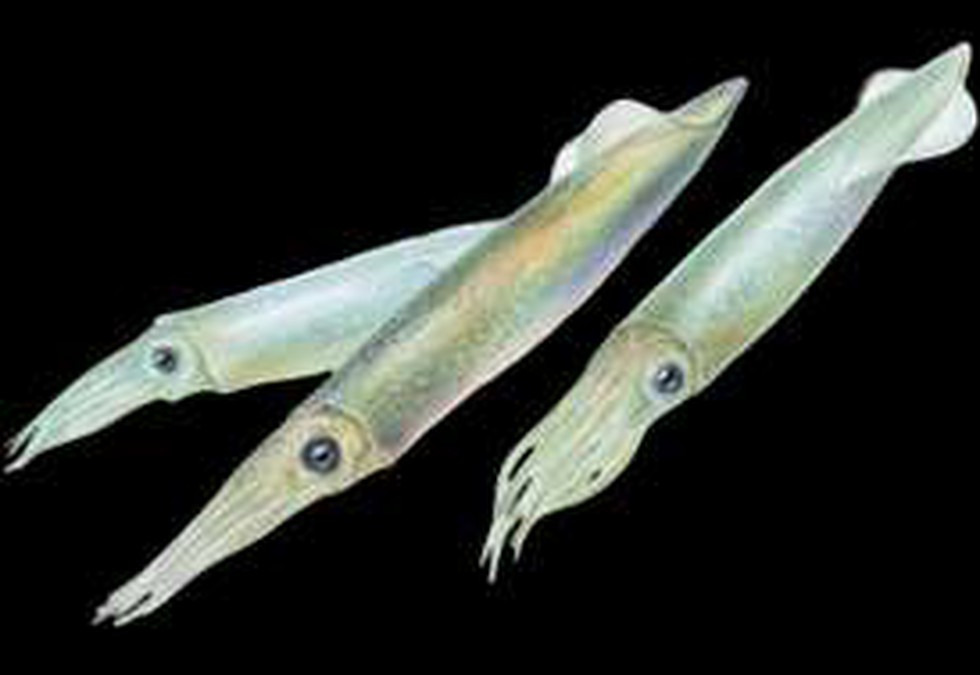
About Indian squid:
- Also known as the Indian calamari, it is a cephalopod species that is commonly found in the waters off the coasts in India.
- Squids are known for their advanced nervous system, exceptional problem-solving skills and complex behaviours like camouflage and jet propulsion.
- Features:
- They are typically around 20-30 cm in length, although larger specimens can reach up to 50 cm.
- They have a distinctive coloration, with a light pinkish-gray body and two large fins on either side. They have eight arms and two longer tentacles that they use to capture prey.
- They are fast swimmers and capable of propelling themselves through the water using a jet propulsion system.
- They tend to prefer areas with high levels of dissolved oxygen, as this is crucial for their respiration.
- Habitat: They are found in coastal waters as well as the open sea. They are commonly found in depths of 100 to 500 meters, although some species can be found as deep as 1,500 meters.
- Distribution: They are known to occur in the Indo-Pacific region including in Red Sea, Arabian Sea, South China Sea and the Philippine Sea, etc.
- Conservation status:
- IUCN: Least Concern
Jan. 28, 2025
Prelims Pointers
Jan. 28, 2025

About Pradhan Mantri Fasal Bima Yojana (PMFBY):
- Launched on 18th February 2016, PMFBY is a crop insurance scheme by the Department of Agriculture, Cooperation, and Farmers’ Welfare, Ministry of Agriculture.
- It aims to provide financial protection to farmers against crop loss due to natural disasters (hail, drought, famine), pests, and diseases.
- It provides crop insurance at a cost-effective premium to all Indian farmers.
- It is implemented through a network of insurance companies and banks.
- Objectives:
- To provide financial assistance and support to farmers suffering from crop damage or loss arising out of unforeseen events
- To stabilise the income of farmers and ensure continuance in farming
- To encourage the farmers to adopt modern and innovative agricultural practices
- To ensure crop diversification, and creditworthiness of the farmers, enhance growth, and competitiveness of the agriculture sector and protect the farmers from production risks
- Eligibility:
- All farmers, including sharecroppers and tenant farmers, growing the notified crops in the notified areas are eligible for coverage.
- Compulsory Component: All farmers availing Seasonal Agricultural Operations (SAO) loans from Financial Institutions (i.e. loanee farmers) for the notified crops would be covered compulsorily.
- Voluntary Component: The Scheme would be optional for the non-loanee farmers.
- Farmers must have an insurable interest in the insured crops.
- Farmers must possess a valid and authenticated land ownership certificate or a valid land tenure agreement.
- Farmers must not have received compensation for the same crop loss from any other medium or source.
- Special efforts shall be made to ensure maximum coverage of SC/ST/Women farmers under the scheme.
- All farmers, including sharecroppers and tenant farmers, growing the notified crops in the notified areas are eligible for coverage.
- Budget allocation and utilization under this scheme should be in proportion to land holdings of SC/ ST/ General along with women in the respective State cluster.
Benefits of the Scheme:
- Affordable Premiums:
- The maximum premium payable by the farmer will be 2% for the Kharif food and oilseed crops.
- For rabi food and oilseed crops, it is 1.5% and for yearly commercial or horticultural crops it will be 5%.
- The remaining premium is subsidized by the government.
- For the farmers in the North-Eastern States, Jammu, Kashmir, and Himachal Pradesh, the government also pays the entire premium.
- Comprehensive Coverage:
- The scheme covers natural disasters (droughts, floods), pests, and diseases.
- Post-harvest losses due to local risks like hailstorms and landslides are also included.
- Loss or damage to notified insured crops due to war, nuclear risks, malicious damage and other preventable risks is excluded from the scope of coverage.
- Timely Compensation: PMFBY aims to process claims within two months of the harvest to ensure that farmers get the compensation quickly, preventing them from falling into debt traps.
- Technology-Driven Implementation:
- PMFBY integrates advanced technologies like satellite imaging, drones, and mobile apps for precise estimation of crop loss, ensuring accurate claim settlements.
- The National Crop Insurance Portal (NCIP) digitizes processes for seamless farmer-insurer-bank interaction. YES-TECH (Yield Estimation System Based on Technology) ensures remote sensing based accurate yield estimation, while CROPIC (Collection of Real-time photos and Observations of Crops) uses geotagged photos to verify crops for precise damage assessment.
Prelims Pointers
Jan. 28, 2025
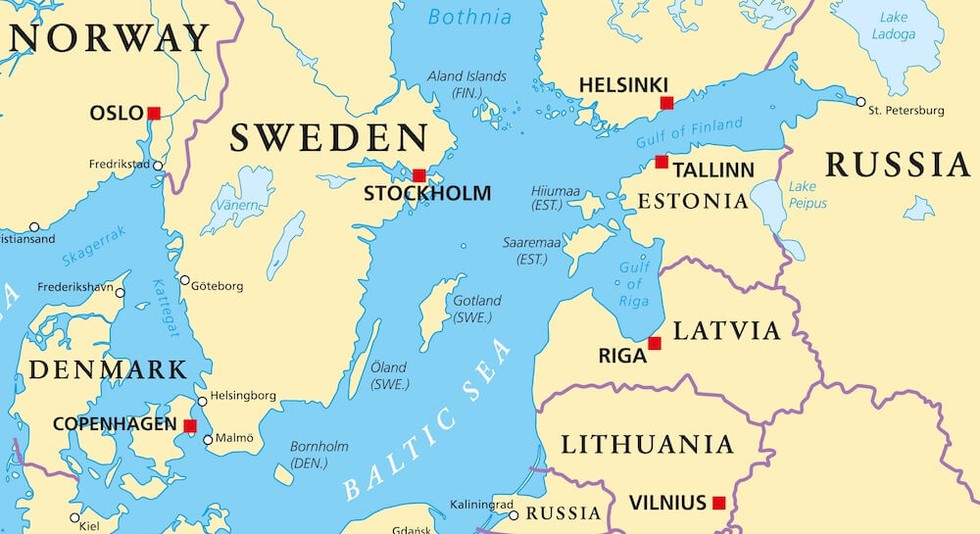
About Baltic Sea:
- It is one of the seas of the Atlantic Ocean, situated in Northern Europe.
- It is the youngest sea on the earth, emerging some 10,000-15,000 years ago as the glaciers retreated at the end of the last Ice Age.
- It is approximately 1,600 km long and 193 km wide, covering an area of approximately 377,000 sq.km.
- Surrounding Countries: It has a coastline of approximately 8,000 km, shared by several countries, including Sweden, Poland, Lithuania, Latvia, Finland, Estonia, Germany, Denmark and Russia.
- It is connected to the Atlantic Ocean via the Danish Straits, to the White Sea via the White Sea Canal and to the North Sea’s German Bight via Kiel Canal.
- The Baltic Sea contains three major gulfs: the Gulf of Bothnia to the north, the Gulf of Finland to the east, and the Gulf of Riga slightly to the south of that.
- It is often cited as the world’s largest brackish inland water body.
- Its water salinity levels are lower than that of the World Oceans due to the inflow of fresh water from the surrounding land and the sea’s shallowness.
- There are about 60 rivers draining into the Baltic Sea. Neva is the largest river amongst them.
- Islands: It is home to over 20 islands and archipelagos. Gotland, located off the coast of Sweden, is the largest island in the Baltic Sea.
- Algal Harmful Blooms are also one of the issues that affect the Baltic Sea.
Prelims Pointers
Jan. 28, 2025
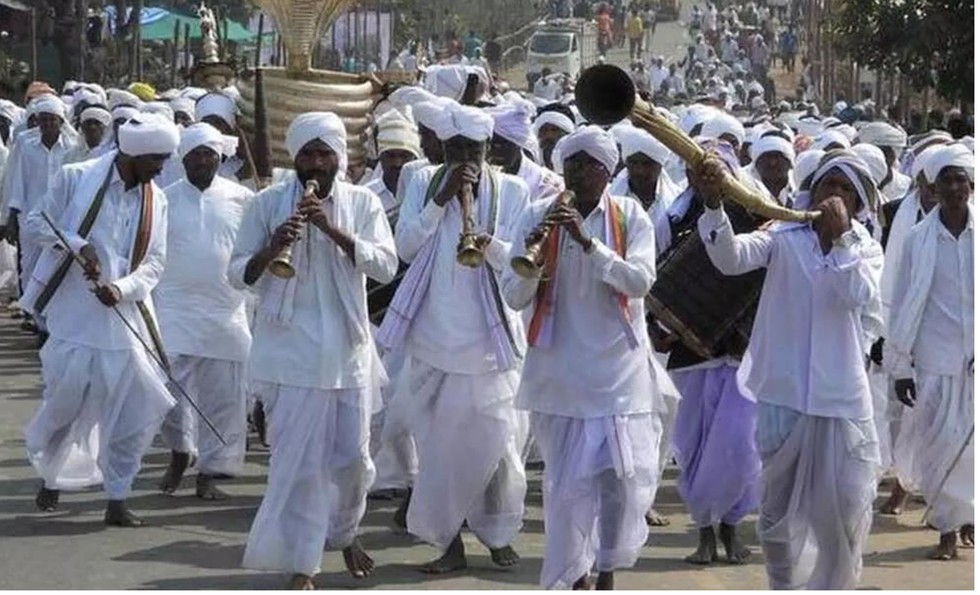
About Nagoba Jatara:
- It is a tribal festival held in January/February in Keslapur village, Adilabad district,
- It is the second biggest tribal festival in India, after the Sammakka Saralamma Jatara, held also in Telangana.
- It is celebrated for 10 days by the Mesaram clan of Gond tribes.
- Tribal people from Maharashtra, Chhattisgarh, Odisha, Karnataka, Jharkhand and Madhya Pradesh belonging to the Mesaram clan offer prayers at the festival.
- The chief deity at the festival is the ‘Nagoba’ (Sri Shek – Cobra).
- Rituals:
- Few elder members of the Mesram clan go barefoot to the River Godavari a few days before the Jatara, bring holy water, and keep it near the Banyan Tree in front of the Nagoba Temple.
- The Jatara includes a ‘Bheting’ ceremony, where new brides are introduced into the clan. New brides come in possession wearing white saris and are led by the elder women to worship the Nagoba, after which they are recognized as a full-fledged member of the clan.
- The Gusadi Dance performance by dancers from the Gond tribe is a major special attraction of the event.
Prelims Pointers
Jan. 28, 2025
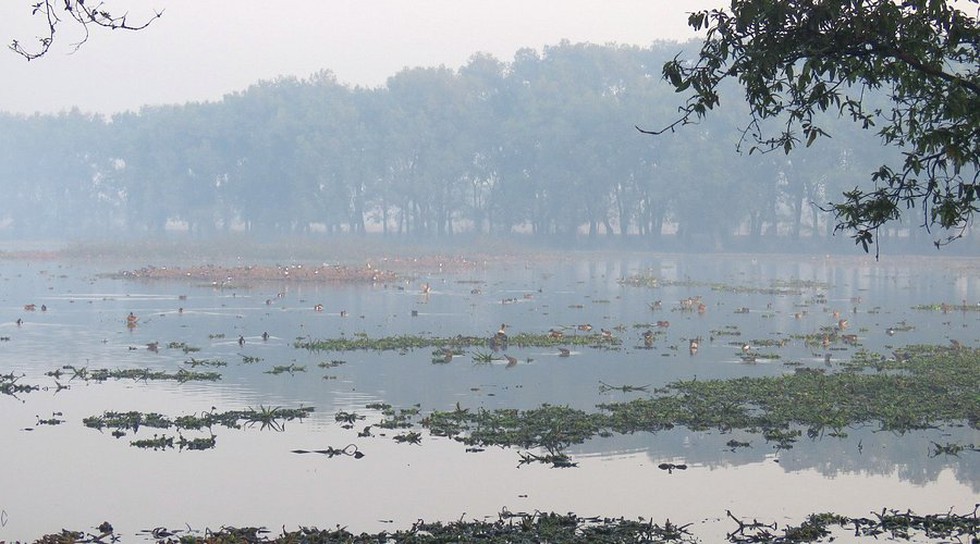
About Surajpur Wetland:
- It is situated near Surajpur Village in Dadri Tehsil of Gautam Budh Nagar District under the Greater Noida Industrial Development Authority, Uttar Pradesh.
- It is an excellent example of an urban wetland in the Yamuna River basin.
- It is the green lung for Greater Noida, with 308 hectares of catchment area and 60 hectares of the waterbody alone.
- It has been classified as an Important Bird Area (IBA) by the BirdLife International.
- It forms suitable breeding ground for waterfowls such as Spot-billed Duck, Lesser-whistling Duck, Cotton Pygmy Goose and Comb Duck, and wintering waterfowls such as Red-crested Pochard, Ferruginous Pochard, Bar-headed Goose, Greylag Goose, Common Teal, Northern Shoveler and Gadwall.
- Apart from a large population of avifauna, the wetland also supports many species of mammals, including Nilgai, Indian Grey Mongoose, Indian Hare, Golden Jackal, and Five-striped Squirrel.
- It also houses several species of fishes, herpeto-fauna, butterflies and more than 220 species of plants.
- The wetland is under threat due to the indiscriminate discharge of highly polluted wastewater into its channels.
Prelims Pointers
Jan. 28, 2025
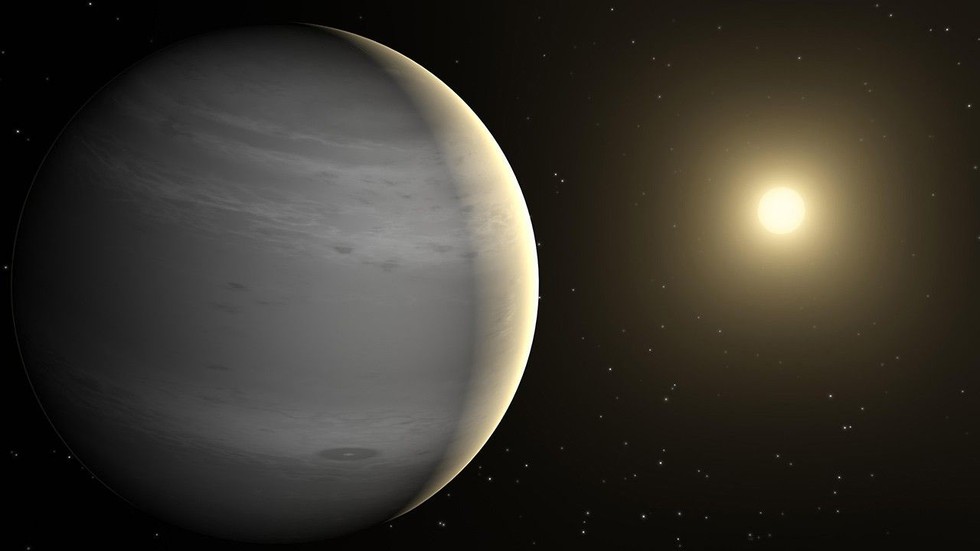
About WASP-127b:
- It is a large gaseous exoplanet, located in our Milky Way galaxy.
- It is approximately 520 light-years from the earth in a tight orbit around a star similar to our sun.
- It orbits its star roughly every four days at just about 5% of the distance between the earth and the sun, leaving it scorched by stellar radiation.
- Like our moon is to the earth, one side of WASP-127b perpetually faces its star—the day side. The other side always faces away—the night side.
- Its atmosphere is about 1,127 degrees Celsius, with its polar regions less hot than the rest.
- Its diameter is about 30% larger than Jupiter’s, but its mass is only about 16% that of Jupiter’s, making it one of the puffiest planets ever observed.
- Like Jupiter, WASP-127b is composed mainly of hydrogen and helium, but its atmosphere also contains traces of more complex molecules such as carbon monoxide and water.
- It is a gas giant planet, which means that it has no rocky or solid surface beneath its atmospheric layers.
- The supersonic jet stream winds circling WASP-127b at its equator are the fastest of their kind on any known planet.
Prelims Pointers
Jan. 28, 2025
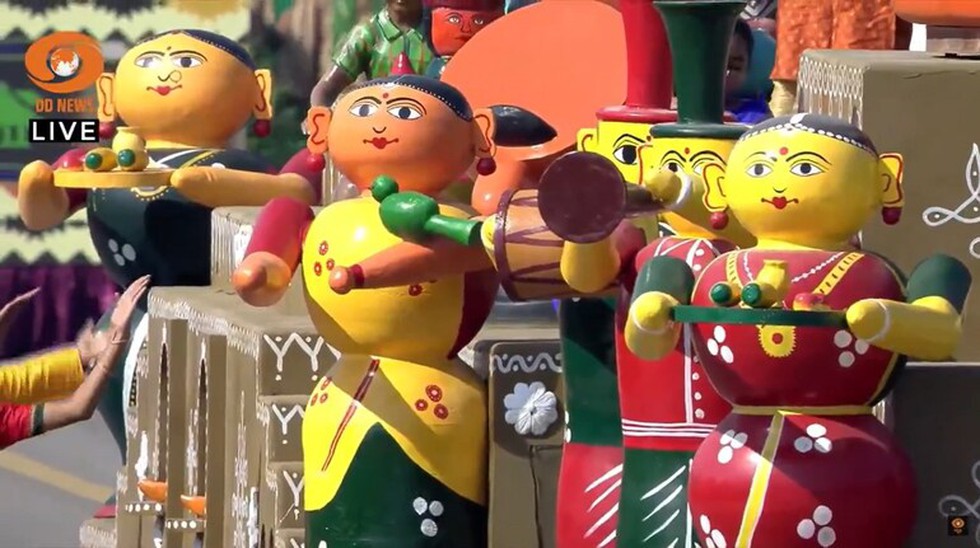
About Etikoppaka Toys:
- Known as Etikoppaka Bommalu, they are the exquisite wooden toys rooted in a 400-year-old tradition of craftsmanship.
- They originated in Etikoppaka village in Andhra
- The toys are renowned for their smooth contours and vibrant colours, coloured with natural dyes derived from seeds, lacquer, bark, roots and leaves.
- The artisans mainly use the wood from trees known as 'ankudu' (Wrightia tinctoria) that is soft in nature.
- These toys have no sharp edges. They are rounded on all sides.
- In 2017, the toys received the Geographical Indication (GI) tag, a hallmark of their authenticity and cultural significance.
GI tag:
- It is a sign used on products that have a specific geographical origin and possess qualities or a reputation that are due to that origin.
- In India, GI registration is administered by the Geographical Indications of Goods (Registration and Protection) Act, 1999.
- The first product in India to be accorded with GI tag was Darjeeling tea in the year 2004-05.
Prelims Pointers
Jan. 28, 2025

About Fentanyl:
- It is a potent synthetic opioid drug approved by the Food and Drug Administration for use as an analgesic (for pain relief) and anesthetic (for surgery).
- It is approximately 100 times more potent than morphine and 50 times more potent than heroin as an analgesic.
- Its overdoses can cause stupor, changes in pupil size, clammy skin, cyanosis (blue skin), coma and respiratory failure leading to death.
What are Opioids?
- These are a class of drugs that derive from, or mimic, natural substances found in the opium poppy plant.
- Impacts on human body:
- They activate an area of nerve cells in the brain and body called opioid receptors that block pain signals between the brain and the body.
- They produce a variety of effects, including pain relief and euphoria and are highly addictive.
- Some common opioids include oxycodone, morphine, codeine, heroin and fentanyl.
- An opioid overdose can be identified by a combination of three signs and symptoms: pinpoint pupils, unconsciousness and difficulties with breathing.
- Their overuse can lead to death due to the effects of opioids on the part of the brain which regulates breathing.
Prelims Pointers
Jan. 28, 2025
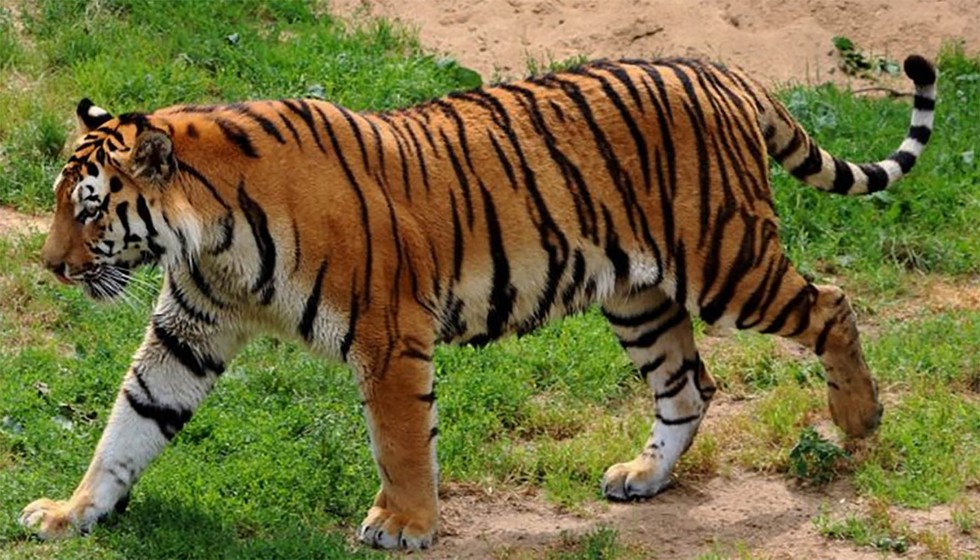
About Namdapha Tiger Reserve:
- It is located in the Changlang District of Arunachal Pradesh, surrounded by Myanmar on the South East.
- It has a common boundary with Kamlang Wildlife Sanctuary.
- It is nestled between the Dapha Bum ridge of Mishmi Hills and the Patkai Ranges.
- It consists of Tropical Evergreen Forest, Tropical Moist Deciduous Forests, Moist Temperate Forests and Moist Alpine Scrub Forests.
- Namdapha River flows right across in a north-south direction of the reserve and hence the name Namdapha has been given.
- Flora:
- It consists of species like Pinus merkusiand Abies delavavi being exclusive to the park.
- It is home to Blue Vanda, which is a rare and endangered orchid. Many other species of orchids are found here.
- It also consists of medicinal plants like Mishmi Teeta (Coptis teeta), which is used by the local tribes to treat different types of diseases.
- Fauna:
- The Namdapha flying squirrel (Biswamoyopterus biswasi) is endemic to the park and is critically endangered.
- Four big cats, found in the park, are leopard, snow leopard, tiger and clouded leopard.
- Others: Elephants, Himalayan Black Bear, Himalayan Sun Bear, Hoolock Gibbon (only Ape in India), Slow Loris, Rare birds and butterflies, etc.
Prelims Pointers
Jan. 28, 2025
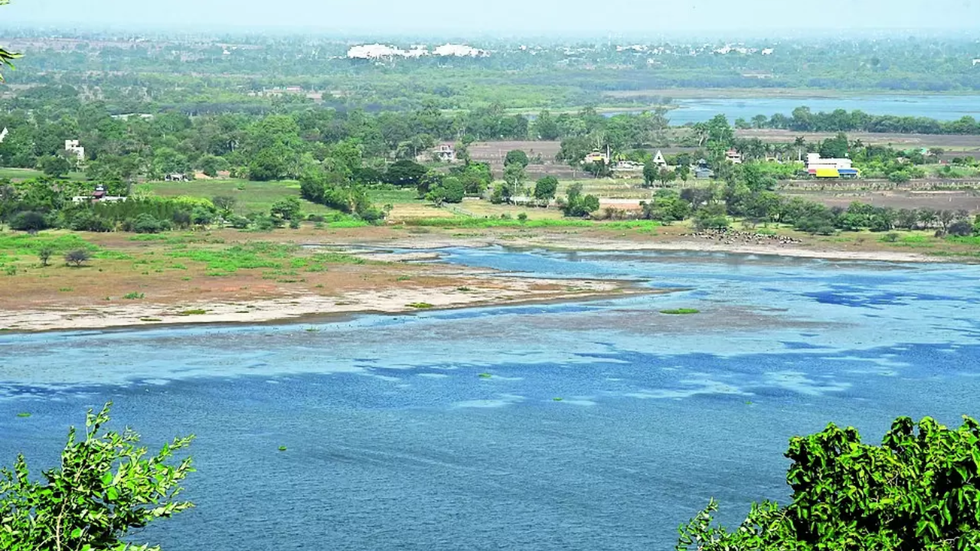
About Wetland Accredited Cities (WCA):
- It is a voluntary accreditation scheme, which provides an opportunity for cities that value their natural or human-made wetlands to gain international recognition and positive publicity for their efforts.
- It was approved during the Ramsar Convention COP12 held in the year 2015.
- It aims to further promote the conservation and wise use of urban and peri-urban wetlands, as well as sustainable socio-economic benefits for local populations.
- It recognizes cities that have taken exceptional steps to safeguard their urban wetlands.
- To be formally accredited, a candidate for WCA should satisfy the standards used to implement each of the six international criteria mentioned in Operational Guidance for WCA of the Ramsar Convention on Wetlands.
- The accreditation is valid for 6 years, after which it must be renewed, providing that it continues to fill each of the 6 criteria.
- Since Ramsar COP13, 74 cities from 17 countries have been officially recognized as “Wetland Cities”.
Prelims Pointers
Jan. 28, 2025
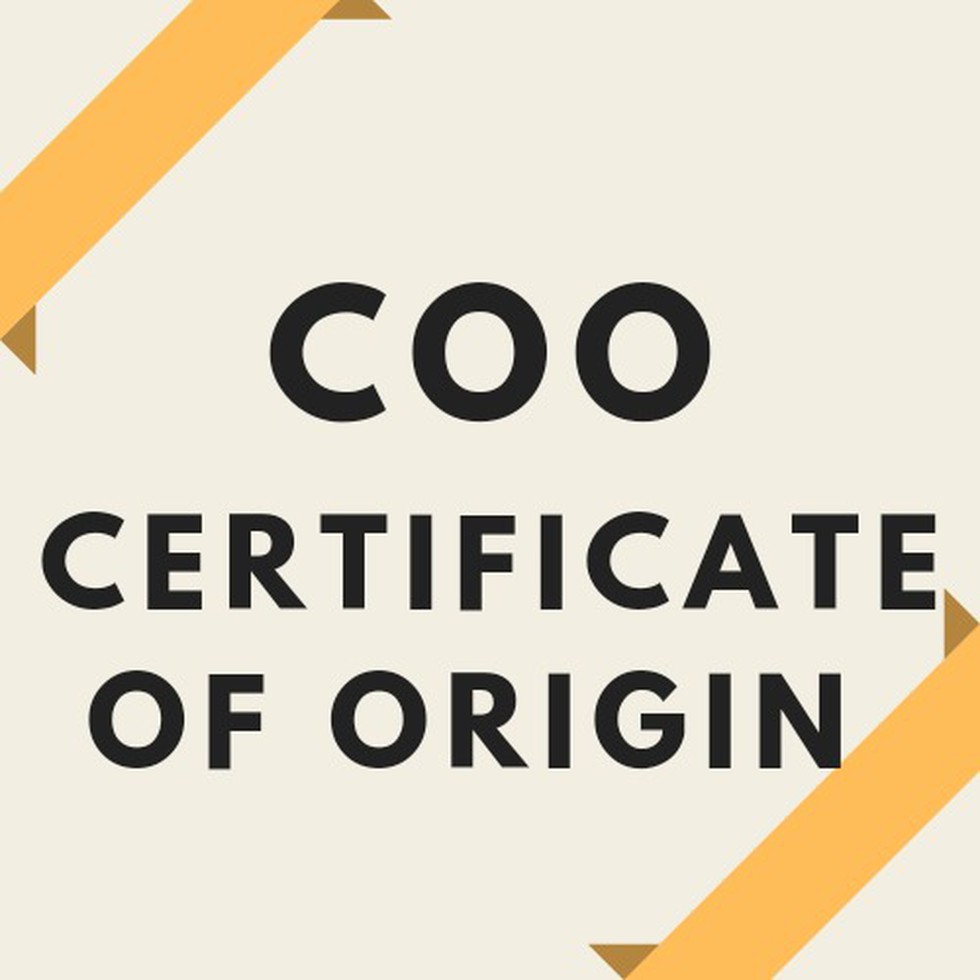
About Enhanced Certificates of Origin 2.0 System:
- It is an upgrade designed to simplify the certification process for exporters and enhance trade efficiency.
- It offers several user-friendly features, such as multi-user access, which enables exporters to authorize multiple users under a single Importer Exporter Code (IEC).
- Additionally, the system now supports Aadhaar-based e-signing alongside digital signature tokens, providing greater flexibility.
- An integrated dashboard offers exporters seamless access to enhanced Certificate of Origin (eCoO) services, Free Trade Agreement (FTA) information, trade events, and other resources.
- The platform also introduces an in-lieu Certificate of Origin feature, allowing exporters to request corrections to previously issued certificates through an easy online application process.
- The platform processes over 7,000 eCoOs daily, including both preferential and non-preferential certificates, connecting 125 issuing agencies which includes 110 national and regional chambers of commerce & industry
- Certificates of Origin is a single access point for all exporters, for all FTAs/PTAs and for all agencies concerned.
- The electronic filing of Non-Preferential Certificates of Origin has become mandatory via the eCoO 2.0 platform, and is available to exporters at https:// trade.gov.in under the “Get Certificate of Origin” section.
- The platform has been designed and developed by DGFT and Regional & Multilateral Trade Relations (RMTR) Division, Department of Commerce, Ministry of Commerce and Industry.

